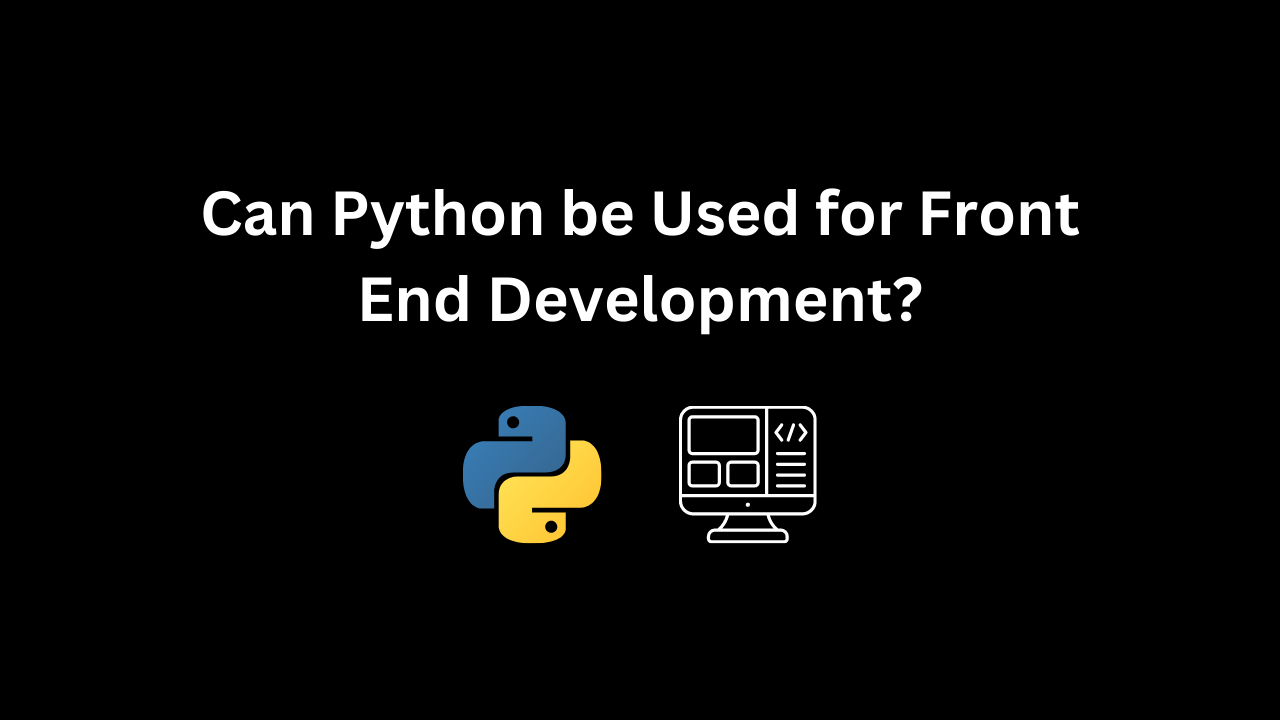
Can Python be Used for Front End Development?
As a Python enthusiast, I have always been curious about whether Python can be used for front-end development.
After all, Python is a versatile and powerful language that can handle various tasks, including data analysis, machine learning, and web development.
So, can Python be used for front-end development?
The short answer is yes, but let's dive deeper into the topic.
Can Python be Used for Web Development?
Before we get into the specifics of front-end development, let's discuss whether Python can be used for web development.
The answer is a resounding yes!
Python has various web frameworks, including Flask and Django, that make web development in Python a breeze.
These frameworks provide a way to build web applications that are powerful, scalable, and secure.
Python's web frameworks offer a robust set of tools and libraries that can be used to build web applications quickly.
With Python, you can build web applications that range from simple web pages to complex web applications that handle large amounts of data.
In addition, Python's web frameworks support a wide range of databases, making it easy to store and retrieve data.
Can Python be Used for Front End Development?
Now that we have discussed Python for web development, let's get back to the question at hand.
Can Python be used for front-end development?
The answer is yes, but with a caveat. Python can be used for front-end development, but it is not the best tool for the job.
Front-end development requires knowledge of HTML, CSS, and JavaScript, and these are the tools that front-end developers use to create beautiful and responsive user interfaces.
Python can be used to create back-end applications that support front-end development, but it is not a suitable language for creating user interfaces.
However, Python's web frameworks, data visualization libraries, and GUI frameworks can be used to create powerful and engaging web applications that support front-end development.
Python Tricks for Front-End Development
While Python may not be the best tool for front-end development, there are still some Python tricks that can come in handy when working on front-end projects. Here are a few examples:
Using Python to generate dynamic HTML
While HTML is the go-to language for creating static web pages, you can use Python to generate dynamic HTML content.
For example, you can use Python's string formatting capabilities to create HTML templates that can be populated with dynamic content.
name = "John"
age = 25
html_template = "<p>My name is {} and I'm {} years old.</p>"
formatted_html = html_template.format(name, age)
print(formatted_html)
The above Python code will output the following HTML:
<p>My name is John and I'm 25 years old.</p>
Using Python to minify CSS and JavaScript
To optimize the performance of web pages, it's essential to reduce the file sizes of CSS and JavaScript files.
One way to do this is by minifying these files, which involves removing whitespace and comments to reduce their size.
Python has several libraries, such as rcssmin and jsmin, that can be used to minify CSS and JavaScript files.
For example, you can use the rcssmin library to minify a CSS file like this:
import rcssmin
with open('style.css', 'r') as f:
css = f.read()
minified_css = rcssmin.cssmin(css)
with open('style.min.css', 'w') as f:
f.write(minified_css)
Using Python for web scraping
Web scraping involves extracting data from websites, which can be useful for a variety of purposes, including data analysis and research.
Python has several powerful web scraping libraries, including BeautifulSoup and Scrapy, that make it easy to extract data from websites.
For example, you can use BeautifulSoup to extract the titles of all the articles on a news website like this:
import requests
from bs4 import BeautifulSoup
url = 'https://www.bbc.com/news'
response = requests.get(url)
soup = BeautifulSoup(response.text, 'html.parser')
for article in soup.find_all('div', class_='gs-c-promo'):
title_tag = article.find('a', class_='gs-c-promo-heading')
if title_tag is not None:
title = title_tag.text.strip()
print(title)
This Python code is scraping the titles of all the articles from the BBC news website.
Conclusion
So there you have it! Python is a fantastic language that can be used for all sorts of web development projects.
With its powerful capabilities, you can create amazing data visualization web apps and GUI apps that will blow your mind!
However, when it comes to front-end development, it's important to keep in mind that Python might not be the most ideal tool.
For the best results, you'll want to brush up on your HTML, CSS, and JavaScript skills, as they are essential for creating engaging and interactive front-end designs.
But don't let that discourage you!
With a little bit of effort and some creative thinking, you'll be able to create some truly amazing web applications using Python.
So go forth and explore the many possibilities that this versatile language has to offer!
Happy Coding!